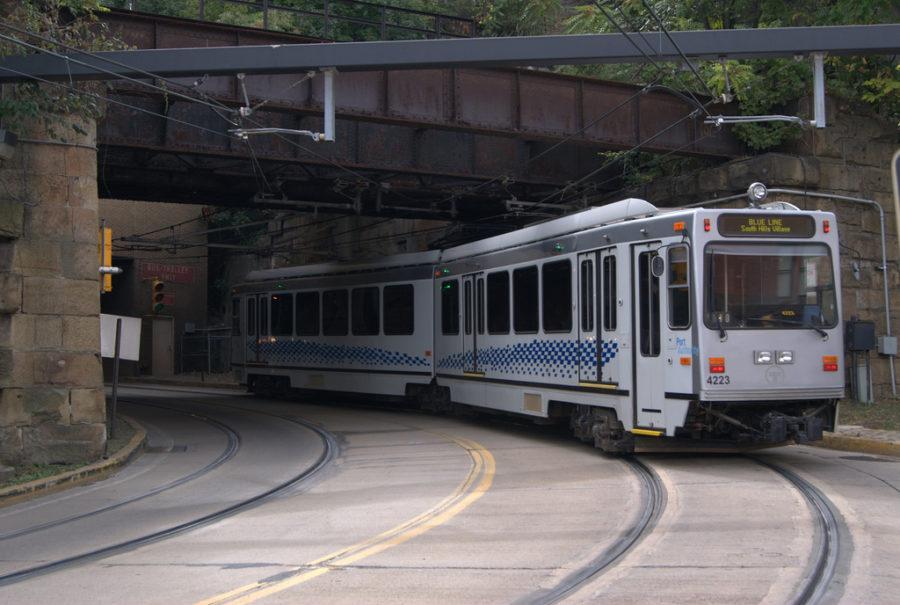Even though many Pitt students don’t even know it exists, Pittsburgh’s humble commuter light rail might soon look a lot more like the transit systems of New York, Los Angeles and Miami — but only as far as security measures go.
The Port Authority of Allegheny County put forward a proposal earlier this year recommending, among other changes, placing armed Port Authority police on Pittsburgh Light Rail trains, which run from the North Side through Downtown and into the South Hills. According to Port Authority spokesperson Adam Brandolph, the policy would potentially address difficulties in collecting the $2.50 fare to ride the train.
“Really, we do not have much enforcement capability at the present,” Brandolph said in a phone interview Monday.
Despite its stated aim to crack down on fare evasion, the policy has brought forth complaints from some community members that it might do more harm than good, including questions of whether police on the T would subject riders to racial profiling or threats of deportation. Just last Friday, the Pittsburgh Public School board publicly announced that it agreed with these objections to the proposal.
“We have immigrant[s] and refugees from all over the world who now call Pittsburgh their home,” the board wrote in a letter to incoming Port Authority CEO Katharine Eagan Kelleman. “Using the current proposed system, PAT would essentially be creating a fare-evasion to deportation pipeline.”
The board brings up an important consideration — one the Port Authority has yet to respond to, beyond promising a place for community input in the policy planning process. Regardless of the problems the T currently faces, it’s hard to see how extending the presence of PAT police officers will fix much.
Anyone who’s ridden the T before would likely agree with Brandolph that the fare system is “confusing, to say the least, for the average rider.” Riders may be required to pay getting on or getting off the train, and at kiosks at the station or on the train itself, depending on which direction the train is going, the time of day and what station it is.
Part of the plan would address this issue. And the Port Authority insists that its police are highly trained and disciplined. But even with that improvement, it should be obvious that flashing a gun in the face of a rider — particularly one who’s new to the United States — won’t be much help.
The risks the community would run by allowing armed police aboard trains would be enough of a reason by itself to oppose such a plan. It’s even harder to support the proposal because the Port Authority itself doesn’t seem to know to what extent the problem of fare evasion on the T even exists.
“We’re unable to say how much loss in ridership we have,” Brandolph said, referencing the Port Authority’s inability to measure evasion. “It’s hard to know if you can’t tell what you originally had.”
Perhaps PAT is right that widespread rider fare evasion is a pressing issue for Pittsburgh’s light rail system. The reasoning is understandable enough on its surface. But the question arises — why spend money on a problem you aren’t even sure exists?


